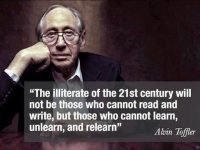Geolumina is a new training platform being developed by Dr. Greg Samways and the Adinvenio Team. The aim is to create accessible, just-in-time learning system that uses the latest technologies to capture the big picture and zoom in to the details where necessary. There are many focal points to the Geolumina philosophy that are outlined below. For further details and to join the conversation, visit the Geolumina Website.
Story Telling – A Critical Skill
One of the key elements of the Geolumina approach will be story telling. We tell “stories” in geoscience all the time, for example, basin (hi)story, depositional (hi)story, burial (hi)story, diagenetic (hi)story and many more.
Like any good story we need good, well defined characters, a good story line and a happy ending! This is yet another skill that needs to be developed and practiced and forms a core part of the Geolumina approach.
Teach to Learn
The best way to test your thinking and find out if your ideas are organised in your mind is to teach. You cannot stand in front of a group of people and tell them something if it is not clear in your mind!
You don’t have to volunteer to run training courses, it could be as simple as explaining a concept to your colleague.
Try using the Feynman Technique to hone your learning, and then make a video of your explanation. Another core part of the Geolumina philosophy.
Less is More – The Curse of the Expert!
When we are faced with a geoscientific problem, we typically bring in the experts to collect more data and look in more and more detail. But so often, so much detail is established that we can no longer see the big picture. More often than not we need to step back, remove several layers of detail and frame the problem in much simpler terms. in this way we can more clearly see the problem and focus on a suitable solution.
There is a problem called “complexification”, whereby we increase the detail just beacuse we can, not because we need to. A core part of the Geolumina philosophy is to understand how to step back and see the big picture.
Systems Thinking – Causal Links
As scientists, we spend too much time deconstructing and analysing. We soon become isolated specialists, working in our silos, working on our own bit of the big picture. We lose sight of the connections and causal links between the elements of the system. Imagine a body with well described and documented organs but no nerves or blood vessels connecting them up . . . it dies.
The connections are just as important as the things they connect. This is a fundamental aspect of systems thinking and another core part of the Geolumina Philosophy. Often we don’t need more detail to answer the problem, we just need to better understand the causal links between the parts of the system.
Learn to Learn
 Seems obvious doesn’t it? However, few of us have been taught “how to learn”. In school you either knew and passed your exams, or you didn’t, and you failed!
Seems obvious doesn’t it? However, few of us have been taught “how to learn”. In school you either knew and passed your exams, or you didn’t, and you failed!
An important part of the Geolumina philosophy is to ensure we consider how we learn and develop the skill. This will be the most important skill for everybody in the 21st century, and especially those in the knowledge industry. Just listen to Alvin Toffler . . .
How to Think, Not What to Think
Geoscience education and training, like most education, focuses on teaching what to think, not how to think. Learning what to think only arms you to solve specific problems, but learning fundamental principles and concepts and how to use them enables us to solve unlimited problems.
After years of experience teaching and learning in the petroleum industry, Greg has recognised the importance of learning how to think and decided to develop training resources that help to develop the underlying knowledge and skills to solve almost any geoscience problems (or at least know where to go for help!).